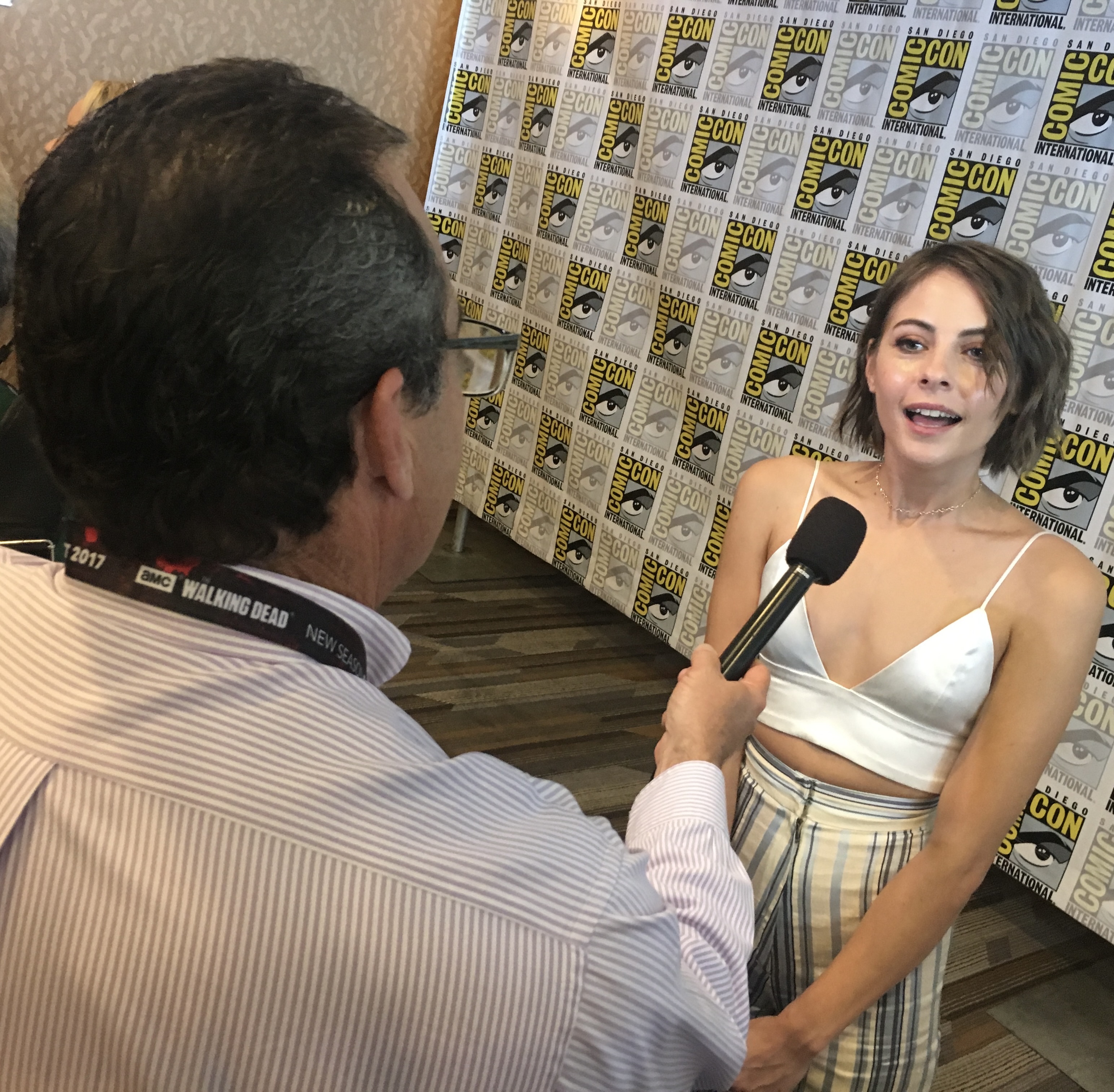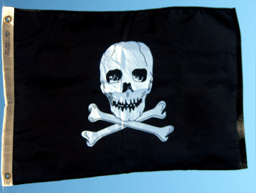
Student Success Stories
A few of my former students are working journalists and, of course, owe all their success to me. Their natural talent and hard work had nothing to do with it!Melissa Alexander got a TV job without any help from me. But I'll take the credit for making her newsroom-ready. She's had a variety of jobs at 10News, both in management and as a field producer. Plus, you gotta like the way she used an internship to get started on her career.
Siobhan Braun deserves her own pirate flag, with dozens of San Diego Reader covers in 13 years, plus countless others on the inside pages, and she just might have another one in the current issue. She wrote her first story in my journalism class, and it's in the column to the right. Siobhan's style has a certain jaded Midwestern charm, which she uses to full effect in her narratives.
Josh Champlin was an investigative reporter before he took my class: When I filled in as an advisor at The Mesa Press, he had already obtained documents that exposed spendthrifts in student government. When he joined me in Journalism 200, we worked on creative non-fiction projects for San Diego Reader: a cover and another story. Now he's working at a newspaper.
Casey Pratt was destined for the big time. It's no surprise that he works for the Disney-owned station in San Francisco, one of the country's largest markets. He's covering his favorite team, the Oakland Athletics. You can find him on Twitter.
Rebecca Steinberg was already an accomplished singer and voiceover talent when she took my class on a summer break from her career. I just needed to get out of her way. She has a website, but it really helps if you're fluent in German, like she is.
Valentina Valentini is a freelance entertainment and travel writer for a wide variety of websites and publications. She began life with a starring role: NBC recorded her birth for a segment on First Camera. The program only lasted six months, but Valentina's talent and tenacity ensure her longevity! Check out her website.
Hoist the Jolly Roger

From May 2008 to February 2013, 24 stories in San Diego Reader came out of my classroom at San Diego Mesa College. That's roughly one publishing credit every 2.5 months.
These are stupendous accomplishments, the journalistic equivalent of amateur card players heading off to Vegas—or at least an Indian casino—and winning poker tournaments. All hot streaks end eventually, but this one was truly a thing of beauty.Alyssa A'Bell was my last cover girl. Why are most of my published writers female? Because chicks rule. Alyssa's story is a postmodern narrative that is delightfully quirky. I remember editing her manuscript and wondering if I should attempt to impose some sort of structure on her work. What, and crush her spirit? Who cares if she doesn't conform to any of the traditional rules? Anyway, it's always better to beg forgiveness than to ask permission. Alyssa's ending alone is worth the read.
Jessica Swenke brings some noir to the proceedings. Her cover is definitely not light. Jessica's narrative chronicles her best friend's descent into drugs and prostitution. It's a story that only Jessica could have written. Sounds simple, but she and all of my other students listed in this column have created tension and complexity that are far beyond community college standards—they're professional grade.
Rashida McElvene's cover is epic. Some of my students succeed with narratives that explore ethnicity, but Rashida also scores with a true-crime angle to her story. She combines both elements for a tribute to her family and the power of the human spirit. I'm a confirmed cynic, but I get a little idealistic when I think about Rashida's article. I've told her this before, and I'll keep saying it: How I wish I could have met her grandmother.
Christian Rodas' story offered up an insider's tour of the health care industry. The consultants who infest local TV newsrooms have a saying: take me somewhere and show me something. As much as I loathed those dudes, in their suspenders and slicked-back hair, they were right. That's what Christian and so many of my other students are doing, and the Reader published their work.
Here is a cover by Brianna Van Ness. At more than 4,000 words, it is a monster. But the narrative is so compelling, you won't be able to resist it. Read the first few paragraphs and see if I'm right. Like so many other students, Brianna writes about the subject she knows best: herself.
Justin Nevling's cover is next. So many of my students have such amazing life experiences that translate naturally to print. Justin already had witnessed the cratering of his career in the wireless industry (think mall kiosks) when he took my class at Mesa. Sounds like a promising Reader narrative already.
Hayley Rafner had a can’t-miss Reader cover story about Hollywood. She’ll remember the day in Journalism 200 when we laid out about 20 pages of her text, representing two completely different narrative threads. I wove them together. The result is another publishing success in my class.
Laurence Neal’s idea was also a winner: abandoning a proud military tradition in his family to become a surf rat in San Diego, with party weekends back home in Las Vegas. This kind of tension is a consistent element in Reader stories written by my students. His cover continues that trend.
An article by Cynthia Washington follows a format employed by other successful students: intensely personal reflection on the forces that forge character. By showcasing her family, Cynthia has portrayed the dynamic that has ultimately defined her. The ability to articulate your own story is an invaluable skill.
David Krueger brings a blue-collar perspective to the proceedings. His story celebrates the working man, who got hammered by the recession. Dave’s determination to make a living—captured in some rather vivid scenes from the job site—offers a different perspective from the work of other students. That’s what a little real-life experience does for a writer.
Remington Cox published his story in the Reader. Among other things, it's a glorious recounting of how a 19-year-old spent his parents' money overseas. Remy took my class and got the same harsh editing as the rest of my students, even though he's my son. At one point, he disageed with my suggested revision and asked, "What are you, some kind of magician?" That's exactly what I am, dear boy. I made published stories appear in San Diego's alternative weekly.
The cover story by Sue Spann is a remarkable narrative. At almost 4,100 words, it's longer than most of the other articles listed below. But Sue's quiet determination propels the story to its satisfying conclusion. Perseverance. Dignity. Bravo.
David Burleson's cover story is next. I dare you to close the link before you're finished. That's how gripping this article is. Spoiler alert: our hero survives. This is another narrative of hope and redemption in the 4,000-word range. But neither Sue nor David's story reads like it.
Brana Vlasic's cover story in the Reader is a remarkable narrative. It combines tales from her Serbian childhood with the sport of table tennis and a legendary coach. I've actually volleyed with Brana. Yeah, like a mouse volleys with a cat. I'm even more awed by her talent, as an athlete and a writer. Don't miss her story.
Maecel Rejas' cover story is a delightful exploration of her Filipino culture, though you wouldn't know it by reading the comments that are posted at the end of the story. Don't these people have anything better to do? They're frightening. Enjoy Maecel's work and don't pay attention to the whiners. Actually, real journalists love those who hyperventilate on our behalf, because it just draws more attention to our work.
Chelsey Tobiason's hilarious account of her hippie childhood resulted in a published article. The Reader inexplicably chose a model to pose for the photo that accompanies the story. Pity. Chelsey is much more attractive. But she'll take the cash and the byline.
From the first day of class, Taylor Restaino knew what her topic would be—a vivid first-person narrative about her near-death experience. She worked hard to produce a great article in the Reader. Here's her cover story.
Evan Bradshaw also had a killer story in the Reader. He actually dies in his narrative, but it's just a video game. His cover story is an insider's account of living large on the pro circuit for electronic athletes. Another great first-person account.
Siobhan Braun also scored the cover in the Reader. Her writing style is reminiscent of the bildungsroman, a German word I learned in grad school. Please excuse the indulgence, since that MA cost me a lot of time and money.
Victor Rice has a street-savvy voice and a powerful narrative. That combination resulted in a cover story in the Reader for this former student. Editors (including professors) should simply get out of his way.
Nasreen Atassi is simply brilliant. Her cover story in the Reader reflects the execution of a very simple idea. She uses her very distinctive narrative voice to reveal the rich complexity of her life.
Here's an article about marbles in the Reader by a former student. Erica Malouf demonstrates how incorporating larger themes and ideas, plus a great voice, results in publication. Note that this article uses the more traditional third-person narrative. This will delight the journalistic purists.
Another former student, Maggie Young wrote an incredibly rich autobiography, which made the cover, and kicked off our run on the front page.
Three months after her big score, Maggie published another article. Even though she was a former student while finishing the second story, she visited me during office hours for editing and shaping of her work. Check out her second story in the Reader.